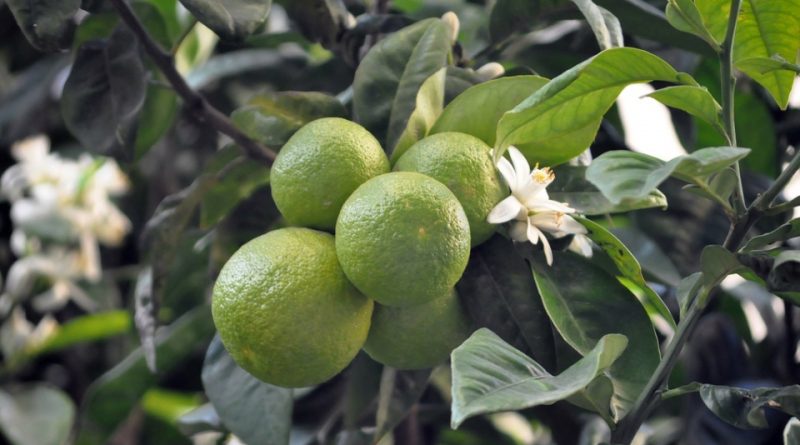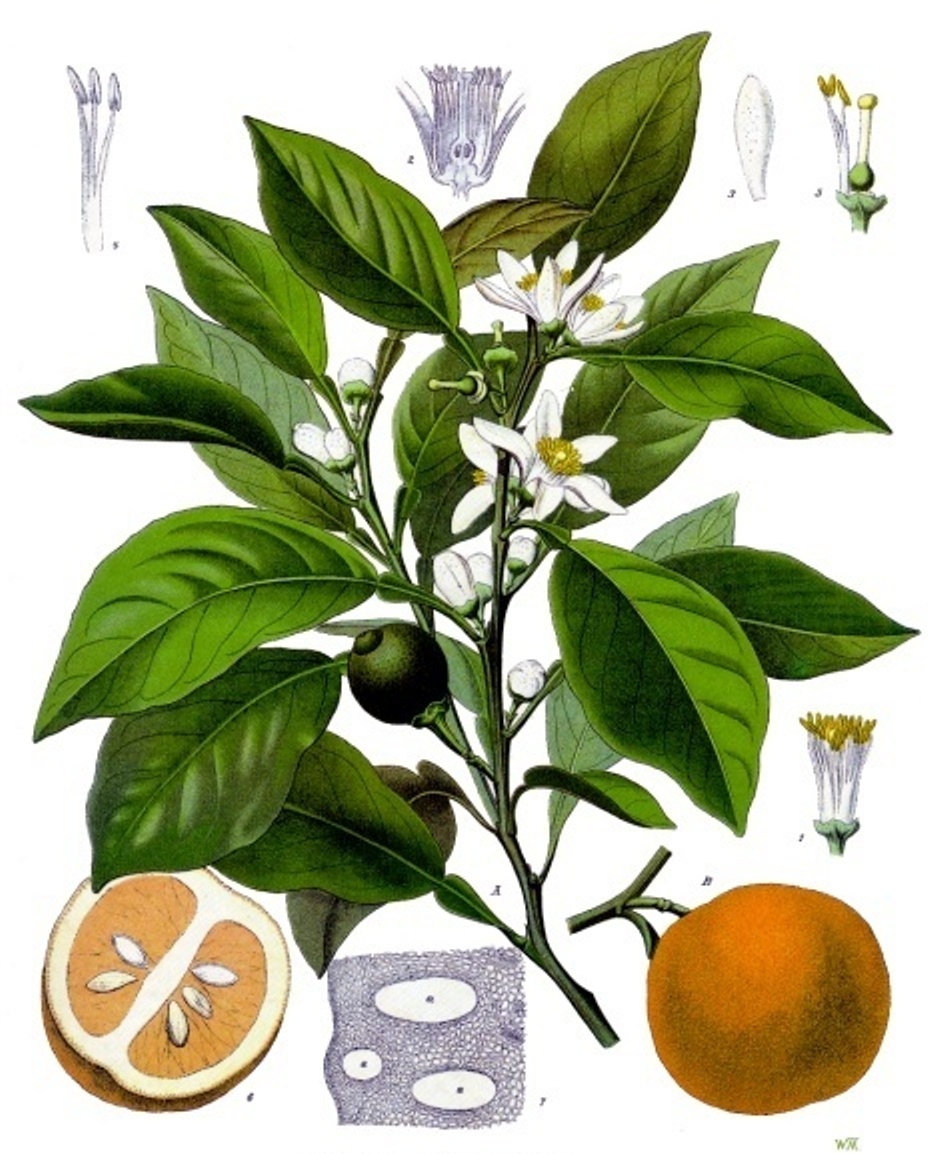Citrus aurantium
Citrus aurantium
Bitter orange (Citrus × aurantium L.), also known as melangolo, is a fruit tree belonging to the Rutaceae family. It is an ancient hybrid, probably between pomelo and mandarin, which for centuries has grown as an autonomous species.
Systematics –
From the systematic point of view it belongs to the Domain Eukaryota, Kingdom Plantae, Subarign Tracheobionta, Superdivisione Spermatophyta, Magnoliophyta Division, Magnoliopsida Class, Subclass Rosidae, Order Sapindales, Family Rutaceae, Subfamily Aurantioideae, Tribe Citreae and then to the Genus Citrus and Species C. aurantium.
Etymology –
The term of the genus Citrus comes from the Latin name of the cedar and lemon, from the Greek Greek κέδρος kédros cedar and κίτρον kítron lemon. The specific aurantium epithet comes from orange málum aurántium.
Geographic Distribution and Habitat –
The first traces of bitter orange have been found in a region that extends between northern India and Nepal. The mass anthropic movements, the conquests of the great ancient civilizations, the Islamic expansion in the Mediterranean, the Crusades and, finally, the discovery of America allowed the spread of this fruit from the slopes of the Himalayas up to California, passing through the Sicilia.
Description –
The bitter orange differs from the sweet one (Citrus × sinensis) to have longer thorns at the axils of the leaves, for the darker coloring of the leaves and for the characteristic winged petiole, for a more intense scent of the leaves that of the flowers, for the fruits that have a more colored and rougher outer rind and in particular for the bitter taste of the pulp.
Cultivation –
Citrus aurantium is a more rustic and robust plant of sweet orange; for this reason its cultivation is finalized to the use as rootstock for all the new citrus varieties, and often also for the hybridization of the already known varieties. In the following form you can find the technical specifications of its cultivation.
Uses and Traditions –
The first written quotation concerning the consumption of oranges comes from China: in 304, in the book entitled Plants of the South-East region, the writer Chi-Han tells of the habit of eating citrus fruits and in particular sweet orange. But the rooted use of the fruit of bitter orange is tangible in Arab society; we remember the remedies and the medicines deriving from the bitter orange mentioned in the Canon of medicine by Avicenna, a Persian physician and philosopher who lived between the 10th and 11th centuries. Following the expansion of the Islamic kingdoms in the southern Mediterranean, the bitter orange arrived in Andalusia, the first European region to welcome its cultivation during the establishment of the Al-Andalus caliphate in southern Spain, before arriving in Sicily. On the island in the middle of the Mediterranean the orange found the best conditions to flourish: the medieval historian and writer Ugo Falcando, author of the History Hugonis Falcandi Siculi de rebus gestis in Sicily and reign, tells of wonderful citrus groves that extended throughout the territory of the kingdom and in particular of the “sour with sour taste”.
Citrus aurantium has a resistance to low temperatures much higher than sweet orange and is mainly used as a rootstock of many citrus fruits. Its fruits are used by the food industry to obtain fresh or dried peel for the confectionery or for the production of liqueurs (eg “Curaçao”) and in pharmacology for the preparation of tonics.
It is also widely used as an ornamental plant by joining tree-lined avenues in some Sicilian municipalities.
Fruits are rarely found on the market as they are predominantly consumed by the food and pharmaceutical industries.
Many varieties of bitter orange are used for the extraction of the essential oil used by the perfumery industry and as a flavoring additive. It also has medicinal properties. From bitter orange we obtain an essential oil which is an ethereal straw-yellow or orange liquid obtained from the peel. Like all essential oils it has a bitter taste, it is partially soluble in 96% alcohol because it is mainly made up of limonene and, unlike the sweet orange essential oil, it contains linalool and linalyl acetate. Promotes appetite and digestion. Contains bergaptene and other furocumarins.
It is used in aromatherapy as relaxing or refreshing depending on mixing with other oils. It tones the digestive system, the nervous system and is considered antidepressant and indicated for insomnia and nervous exhaustion.
The essence of zagara or neroli is a product obtained from flowers and is used in perfumery.
Also remember the Petitgrain is an essential oil made from leaves, branches and unripe fruits (hence the name petit grain) of bitter orange and is used in the production of perfumes.
Preparation Mode –
The bitter orange can also be consumed in the fresh state but its real use is to prepare the famous jams and candied fruit; the peel is also used in liquoreria (curaçao, amari). The pharmaceutical industry mainly uses the peel for the preparation of various digestives and tonics.
Guido Bissanti
Sources
– Acta Plantarum – Flora of the Italian Regions.
– Wikipedia, the free encyclopedia.
– Treben M., 2000. Health from the Pharmacy of the Lord, Advice and experience with medicinal herbs, Ennsthaler Publisher
– Pignatti S., 1982. Flora of Italy, Edagricole, Bologna.
– Conti F., Abbate G., Alessandrini A., Blasi C. (ed), 2005. An annotated checklist of the Italian vascular flora, Palombi Editore.
Warning: Pharmaceutical applications and alimurgical uses are indicated for informational purposes only and do not in any way represent a medical prescription; there is therefore no liability for their use for curative, aesthetic or food purposes.


